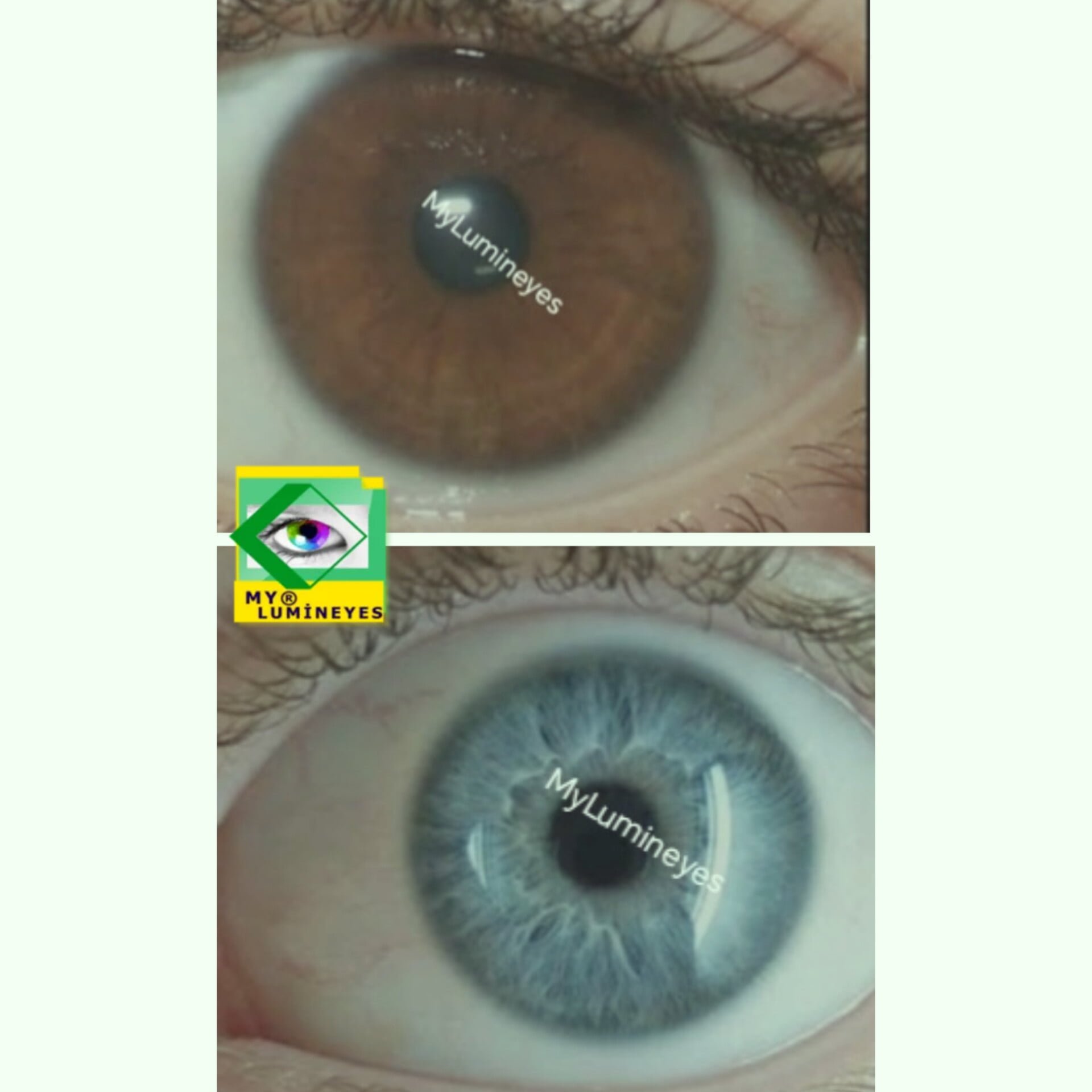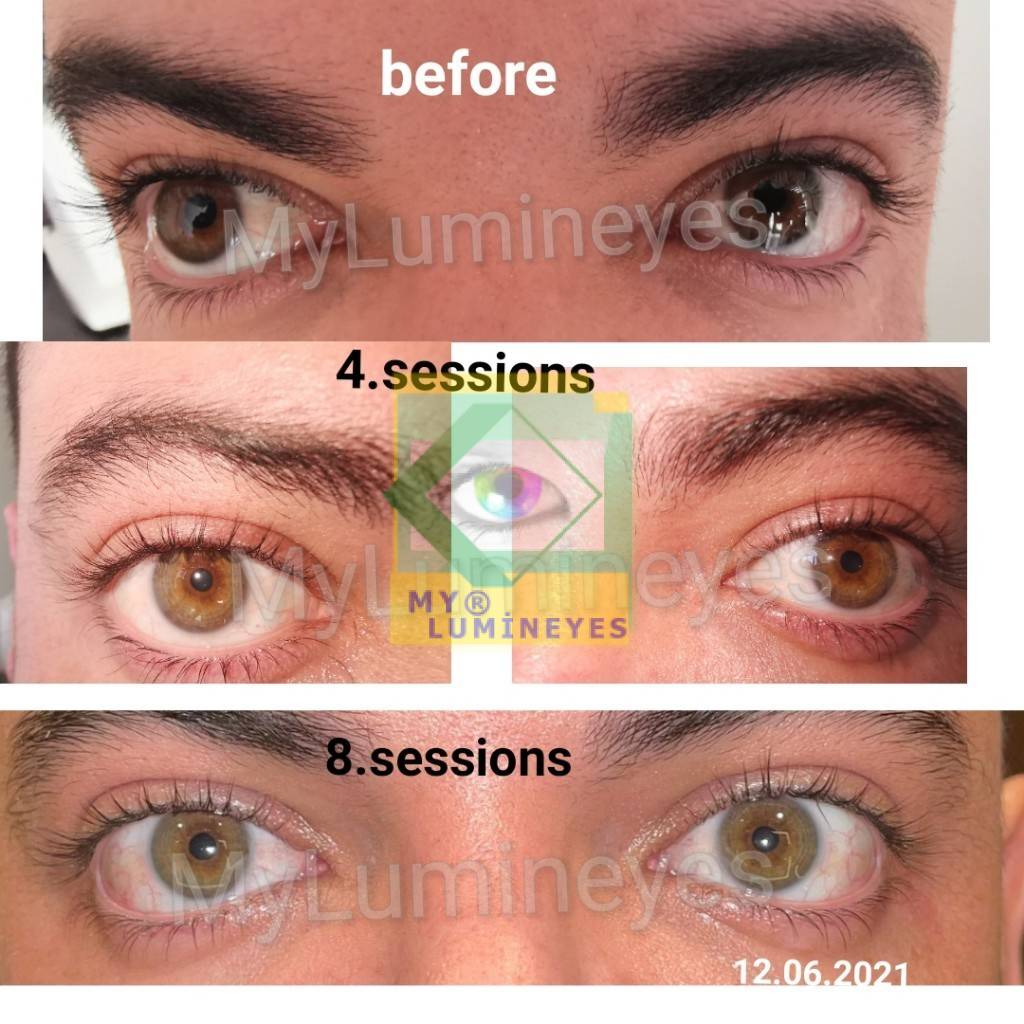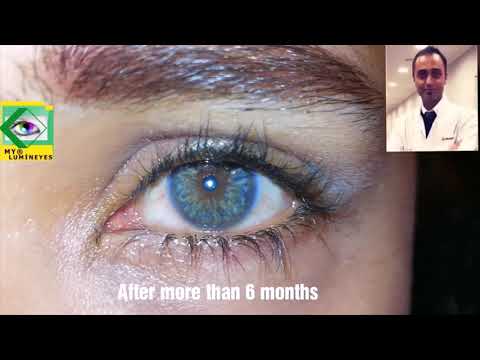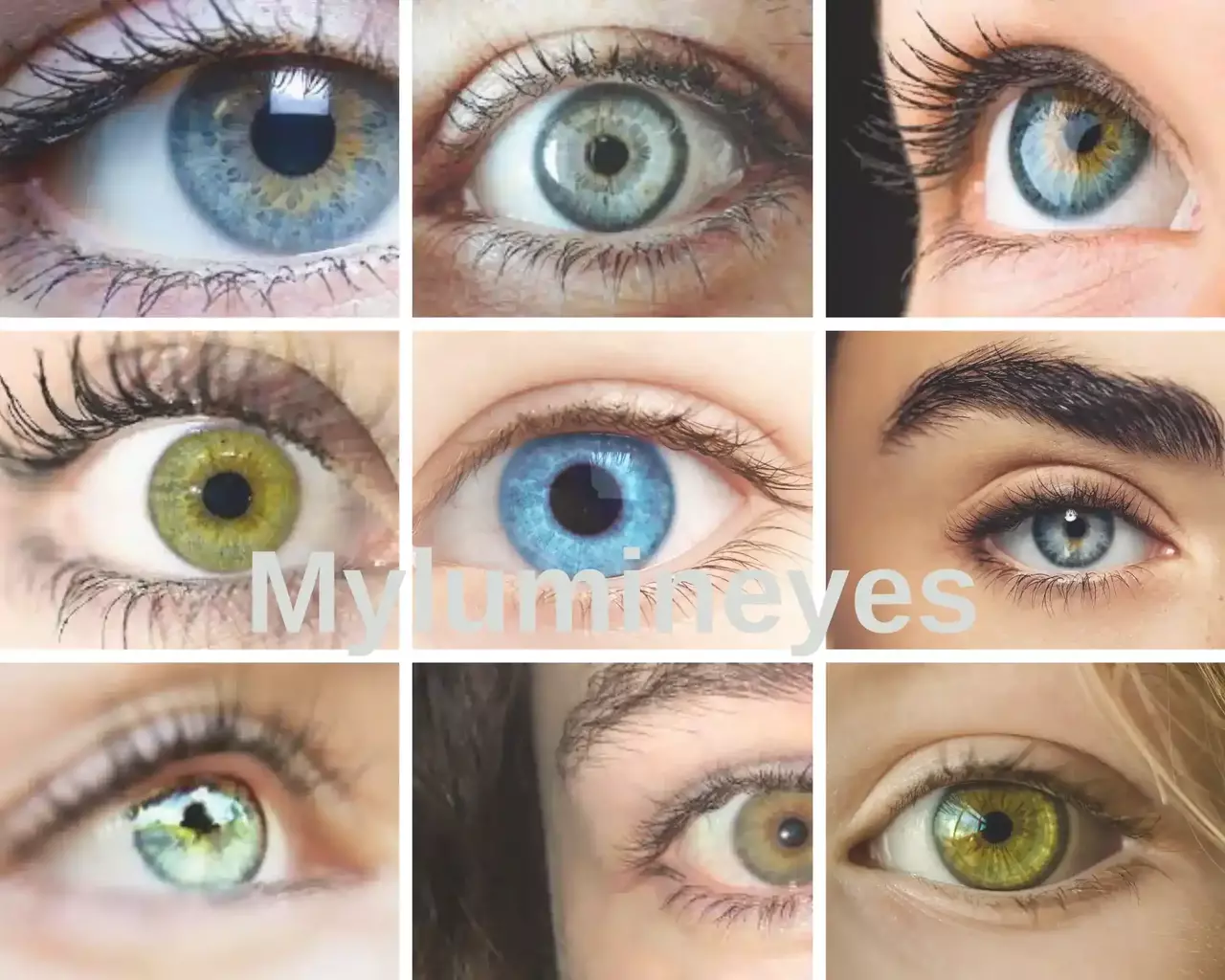Surgery for eye color change
There seem to be various surgical options for changing the color of the eyes. To change the color of the eye, there are two procedures that can only be performed through surgery. The first is iris implants, which involve inserting a colored artificial iris into the eye. In the second process, called keratopigmentation, the cornea is injected with specific pigments to change its color. These surgical options must be carefully evaluated because of the potential risks and issues.
It is said that “laser eye color change” is the only non-invasive procedure that can provide results in eye color that are exactly natural without surgery.
The “Mylumineyes Laser Eye Color Changing Procedure” successfully improves one’s eyes’ natural visual attractiveness.
Unfortunately, it is impossible to achieve a natural appearance with other methods. And almost all patients experience extreme dissatisfaction and disappointment. The “My Lumineyes laser eye color change treatment” is entirely natural.
The surgical procedure known as surgery for eye color change is used to modify the pigmented region of the eye, known as the iris, in response to ocular damage or the presence of a medical ailment impacting the eye. Infrequently, it is used for aesthetic purposes as a lasting substitute for tinted contact lenses.
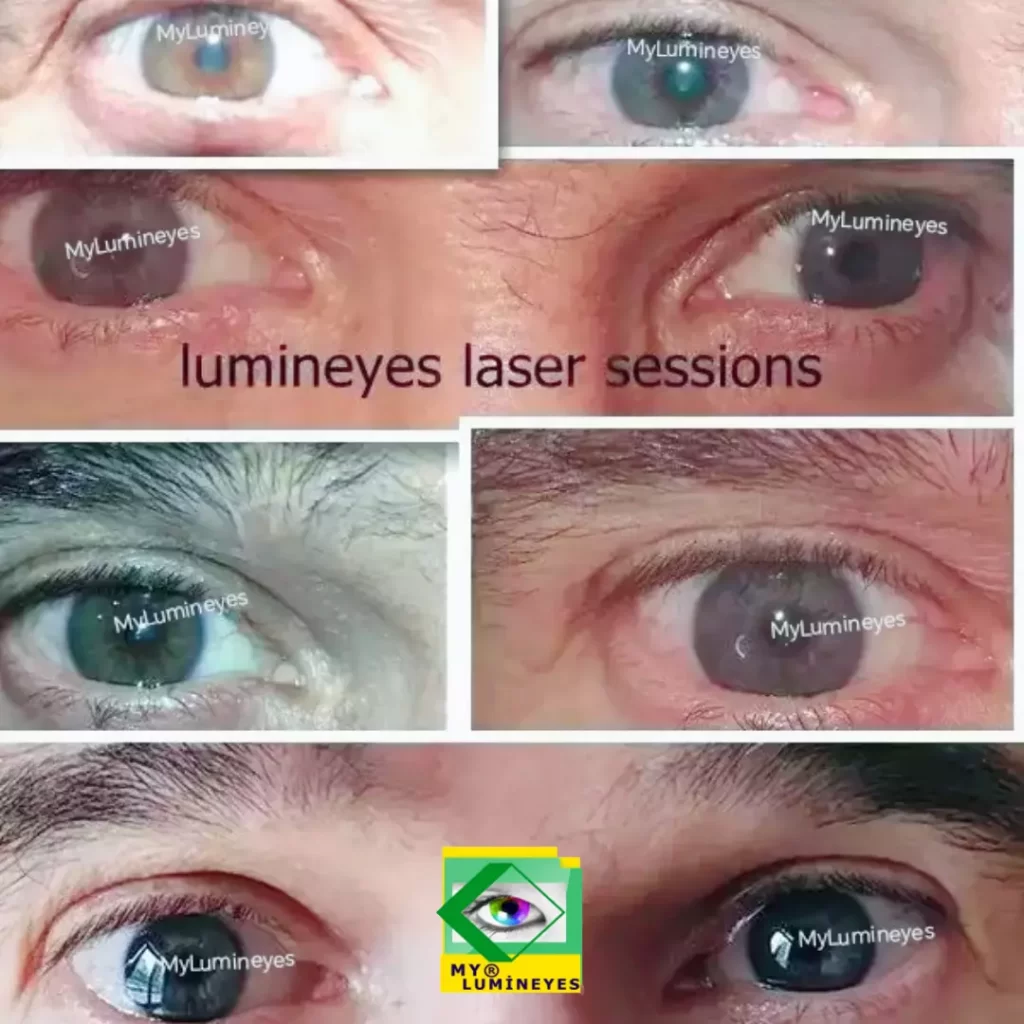
There are three different techniques to change the color of your eyes:
In keratopigmentation surgery, the cornea is treated using pigments. Known as corneal tattooing, this process precisely injects a dye into the cornea, the clear front part of the eye, using laser technology. Laser depigmentation is a technique that utilizes lasers to remove melanocytes, which are the pigment-producing cells located on the outermost layer of the iris. And the last one is The procedure known as iris implant surgery for eye color change involves the substitution of the individual’s original iris with a synthetic prosthetic iris.
Early on in life, the color of the eyes matures. Early on in childhood, people often develop eye colors that last a lifetime and may include tints of brown, blue, hazel, green, or gray. Some people decide to use colored contact lenses to enhance the brightness or change the color of their eyes. Some individuals resort to more drastic actions.
There is a growing interest in a novel and contentious surgical intervention that has the capacity to permanently change the color of the human eye. The aforementioned treatment, which has gained popularity among those in the public eye, involves the use of an artificial iris to swiftly and significantly modify one’s eye color. Many doctors warn that this specific approach may seriously damage the eyes.
What are the methods for achieving a lighter eye color?
There are several ways to change the color of your eyes, including iris implant surgery, keratopigmentation, and laser eye color change techniques. The surgical intervention known as iris implantation involves the placement of an artificial iris into the ocular structure. The initial purpose of its development was to address ocular abnormalities, namely albinism and aniridia.
How can one get lighter eye color?
It is possible to alter the color of a person’s eyes by the utilization of a number of different procedures, including keratopigmentation, laser eye color modification operations, and iris implant surgery using implants.
1-Laser depigmentation, often known as eye color changing surgery by laser, is the first operation that is performed.
In the field of medicine, laser eye color change surgery, which is sometimes referred to as laser-assisted surgery, is a technique that use laser technology to carry out a number of surgical treatments.
As previously explained, this procedure removes the pigment cells that give the eye its color, resulting in a change in the iris’s color. When people are absent, their brown eyes may appear to be blue. This is due to the absence of pigmentation in blue eyes. Only those with brown eyes can undergo the procedure. Similar to other surgical interventions, conventional laser operations may have potential adverse effects.
2. The topic of discussion pertains to iris implants.
“Iris implant surgery” refers to the surgical procedure of inserting an artificial iris into the eye’s structure. The main objective of its invention was to treat the ocular disorders aniridia and albinism.
The iris, an anatomical structure located inside the eye, is primarily responsible for determining eye pigmentation. In summary, iris implant surgery is a significant surgical procedure that aims to change the pigmentation of the eye. Furthermore, it will bring together several significant concerns. Unfortunately, both safety and appearance suffer from this method.
Moreover, it is crucial to recognize that following the eye color-changing operation, certain problems might arise that call for additional surgical intervention.
Unfortunately, taking it out causes the ocular area permanent damage.
As such, one of the major adverse consequences of the operation is blindness. Unfortunately this makes the possibility of an ocular well-being decline rather significant.
Those with missing or damaged iris are supposed to benefit from this treatment. An ophthalmologist first incises the cornea, the translucent layer that is anterior to the eye, and then places a colored silicone implant.
Subsequently, the implant is expanded in order to envelop the iris. Research indicates that individuals who have had iris implantation procedures have significant issues. It is possible that a further surgical procedure may be required to remove the implants. Alternatively, a cornea transplant may be necessary in the event of a corneal injury. A majority of participants in a limited-scale study had postoperative complications.
3.Keratopigmentation Surgery
Laser keratopigmentation, often referred to as corneal tattooing, is an alternative term used to describe the same procedure. The procedure does not alter the pigmentation of the iris; rather, it imparts pigmentation to the cornea in order to mask the natural coloration of the iris.
The process of keratopigmentation is creating a series of circular tunnels in the cornea with constant depth by use of laser technology. We then color the underground passageways with a colorful pigment. A more consistent color dispersion is possible using robotic lasers than with conventional “needle-puncture” techniques.
During keratopigmentation, the ocular area is numb and local anesthesia is induced by the use of anesthetic eye drops.
With a harness to keep the individual immobile, we will also utilize a device like a caliper to keep the eyelid open and stop blinking. The aforementioned operation may induce discomfort, however little, with agony being a rare occurrence. The potential risks or dangers associated with a particular activity, situation, or decision Although keratopigmentation is a treatment known for its precision, it is important to acknowledge that it is not devoid of hazards.
Although extensive measures are taken to ensure the stabilization of the eye and head, any unintended motion has the potential to result in inaccuracies and even harm. Additional difficulties may occur after the completion of the treatment.
There are potential hazards associated with laser keratinization, which include: The phenomenon of inconsistent eye color might be attributed to the unequal dispersion of the pigment.
The phenomenon of color fading might be attributed to either the migration of dye or the leaking of dye into the corneal region. Corneal perforation is the presence of a puncture in the cornea that can cause fluid leakage, changes in vision, and the sinking of the corneal dome. Photophobia, or light sensitivity, occurs when light refracts abnormally when it interacts with the opaque limits of the treated cornea.
When the dye is given, it may cause a reaction that leads to uveitis, which is inflammation of the uveal tract, or ocular neovascularization, which is the growth of new blood vessels in the cornea. The presence of a bacterial eye infection heightens the susceptibility to the development of corneal ulcers and subsequent scarring. The use of laser keratopigmentation is prohibited for individuals who exhibit corneal pathologies or have had refractive ocular surgery, such as LASIK.
Have you ever desired the ability to permanently change the color of your eyes?
There have been discussions about surgical procedures that purportedly provide the ability to change the color of one’s eyes to a desired hue.
How does a change in eye color occur, and what are the components that contribute to it?
It has been noted that wearing a certain color might improve the look of one’s eyes, creating the impression that they are more bright or gently modifying the color that is thought to be present in them.
Alternatively, it may have been conveyed to you that the hue of your eyes changes in response to your emotional state.
However, is it really Possible For One’s Eye Color To Undergo Change?
When considering the attribute of eye color, the majority of individuals are compelled to embrace the inherent trait bestowed upon them at birth. Optical illusions resulting from fluctuations in lighting conditions may be responsible for many instances when eye color seems to change. If an eye color were to change, it is often seen as having minimal importance. A conspicuous change in eye color might indicate ocular trauma or another visual ailment.
This study attempts to go more into the elements affecting eye color and the possible triggers for its change.
It is commonly known that over the early years of their growth, babies’ eyes tend to become more pigmented. A darker-hued pigment known as melanin is synthesised by the human body during this era. The iris may change in color subtly via contraction or expansion. A person may exhibit this phenomena when they have ocular fixation, spend time in settings with harsh illumination, or go through very emotional situations.
It has been observed that individuals may sometimes perceive a lightening of their eye color as they get older.
It has been observed that individuals may sometimes perceive a lightening of their eye color as they get older.
This phenomenon is intrinsic and does not justify concern. Exposure to light causes an increase in melanin production, resulting in a visible alteration in their eyes’ pigmentation. However, it is crucial to acknowledge that changes in eye color can occur as a person naturally ages. Individuals with lighter-colored eyes, particularly those of Caucasian heritage, may suffer a progressive lightening of their eye color over their lives. The pigment deteriorates gradually over time, resulting in a decline in the amount of color it contains.
Changes in the color of the eyes are quite uncommon.
Occasionally, the expansion of the pupil can lead to changes in the visual aspect of an individual’s eye color. Various elements in an individual’s surroundings, including the colors in the environment, lighting conditions, and wardrobe choices, might influence the occurrence of an eye color shift or the perception of different eye colors. These variables have the ability to influence eye color through their interaction with genetic predispositions, medical disorders, pharmacological treatments, and physical traumas.
Can the color of someone’s eyes actually change?
It could be contended that the response to the query is in the negative. An individual’s eye color is determined by the quantity and concentration of the pigment melanin. Darkness in the appearance of eyes is a result of a higher concentration of melanin. The level of pigmentation in a person’s eyes is directly proportional to the quantity of melanin present, resulting in a lighter overall look.
A person’s eyes usually maintain the same hue from infancy to adulthood. According to research, there are rare occasions when eye color can be changed owing to genetics or ocular injury. Simply told, changing your eye color at home is not a practical choice. No amount of fancy drops, meals, or mood changes will do this.
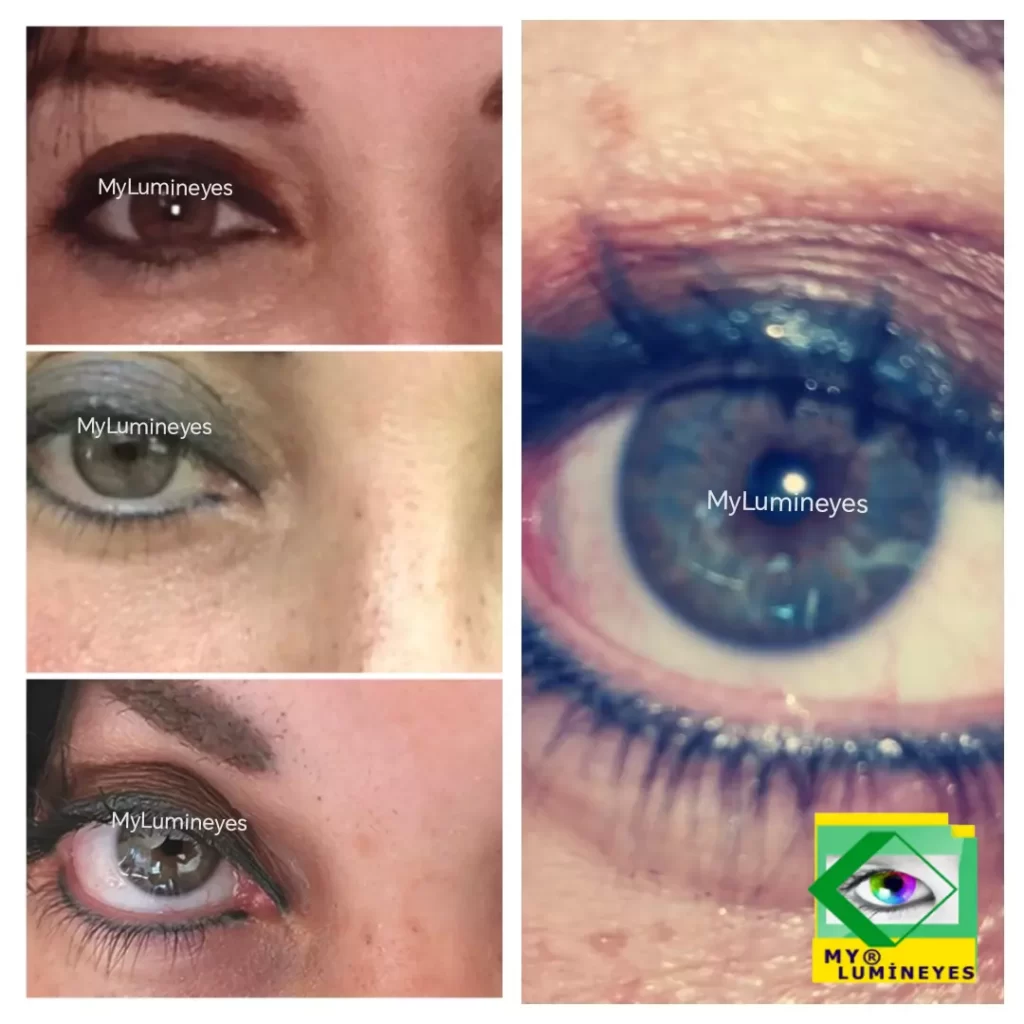
Heterochromia is a disease that causes people to have two different colored irises.
Heterochromia is a color shift that occurs regularly in the eyes. It may also appear on the skin and in the hair. Most people have matching eye colors. Individuals with heterochromia, on the other hand, see different colors in both eyes. The pathogenesis of this condition is typically associated with eye injury or trauma. Congenital malformations such as Waardenburg syndrome, Sturge-Weber syndrome, congenital Horner’s syndrome, and Parry-Romberg syndrome are seldom the reason.
Also in people with pigmentary glaucoma, the iris’ coloring can change, which can cause their eye color to change. This eye disease is a type of open-angle glaucoma that is passed down through families. It may show up for the first time in people in their 30s or 40s.
Can Honey, Mood or Some foods can change eye color?
Some individuals claim that one may change the color of their eyes by submerging them in a solution of warm water and pure honey. This assertion is not supported by much actual data. Actually, the mixture cannot penetrate the cornea and reach the iris, hence the likelihood of such an event is rather unlikely. There is no scientific proof that honey can change the color of your eyes, despite research showing that it has anti-inflammatory effects and may help with dry eye problems. People seldom ever experience changes in their eye color.
The chromatic attributes present in one’s surroundings, including both ambient illumination and attire, have the potential to create a perceptual phenomenon whereby the appearance of one’s eye color may be altered.
The color of the iris, namely the eye color, has the potential to undergo minimal changes during an individual’s lifespan.
It is observed that the pigmentation of the iris tends to undergo a darkening process throughout the first years of an infant’s existence. During this period, the human body undergoes a process in which it synthesizes a pigment called melanin, resulting in a darker complexion.
The change of the iris, whether by expansion or contraction, may result in subtle changes in the coloration of the eye. Once the pigmentation of our eyes reaches its maximum level, it is often uncommon for any further changes in color to occur. Nevertheless, there are other elements that might have an impact on the visual appearance of our eyes. In some instances, there are medical problems that may cause changes in iris pigmentation or alterations in the appearance of the eye.
Are brown-eyed people capable of having a color change that results in hazel eyes?
Probably most people would answer negatively. Eye color matures during infancy and remains constant during a person’s lifespan. However, it is worth noting that a minority of people may have a natural change in eye color, resulting in either a discernible darkening or lightening over time.
What is the reason for the change in color of my eyes to blue?
The presence of a blue sclera may indicate the presence of many medical disorders. The etiology in young individuals may be attributed to a hereditary genetic disorder, mostly affecting the connective tissue inside the human body. Iron deficiency in adults may lead to the development of a bluish appearance in the sclera. Typically, the presence of discomfort or other symptoms is not often associated with a blue sclera.

